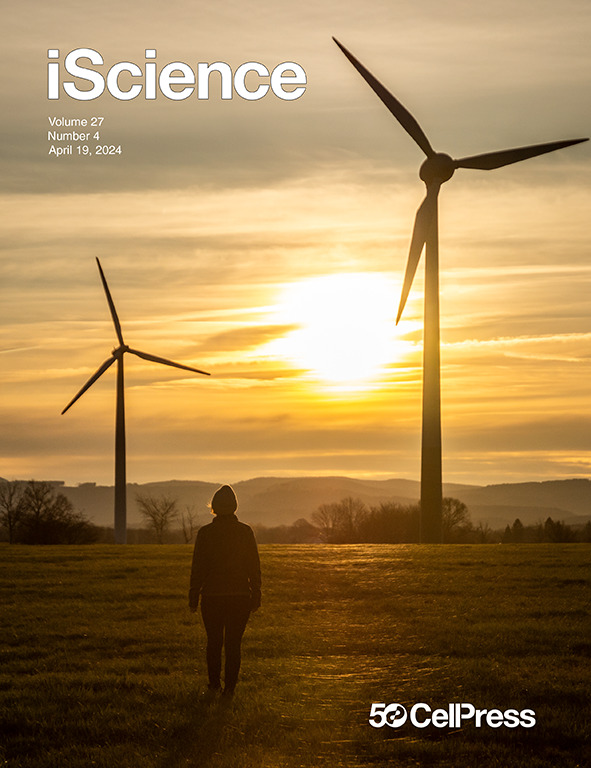Therapeutic restoration of miR-96 prevents hearing loss in mice through modulation of noise-induced and genetic pathways
IF 4.6
2区 综合性期刊
Q1 MULTIDISCIPLINARY SCIENCES
引用次数: 0
Abstract
Hearing loss often arises from impairments in multiple genes, complicating therapeutic development. MicroRNAs, as master regulators, offer promising targets for complex diseases. We explored miR-96’s roles in hair cell (HC) function and noise-induced hearing loss (NIHL), finding that miR-96−/−, not miR-96+/−, mice exhibited progressive hearing loss due to gene regulatory network dysregulation from miR-96 loss in HCs not spiral ganglion neurons (SGNs). Viral-mediated delivery of miR-96 into the inner ear partially rescued hearing of miR-96−/− mice. Tamoxifen-induced depletion of miR-96 in adult UBCCreERT2/+; miR-96fl/fl mice led to hearing loss, with Bach2, Gabra2, Gabra4, and Grk1 upregulation and Tnn, Col11a1, Gjb3, and Hnf4a downregulation. Furthermore, noise trauma reduced miR-96, altering Bach2, Bcl2l1, Slc26a9, Gabrb1, Grk1, Nos2, and Cyp1a1 expression, whereas miR-96 overexpression protected hearing against noise by reversing the expression of Bach2, Bcl2l1, and Cyp1a1. Our findings underscore miR-96’s essential role in adult hearing maintenance and NIHL prevention, presenting it as a promising therapeutic target.

治疗性恢复miR-96通过调节噪声诱导和遗传途径防止小鼠听力损失
听力损失通常是由多个基因的损伤引起的,使治疗发展复杂化。MicroRNAs作为主调控因子,为复杂疾病提供了有希望的靶点。我们探索了miR-96在毛细胞(HC)功能和噪声性听力损失(NIHL)中的作用,发现miR-96−/−,而不是miR-96+/−,小鼠表现出进行性听力损失,是由于HCs中miR-96缺失而不是螺旋神经节神经元(sgn)中的基因调控网络失调。病毒介导的miR-96进入内耳部分恢复了miR-96−/−小鼠的听力。他莫昔芬诱导成人UBCCreERT2/+中miR-96的缺失miR-96fl/fl小鼠导致听力损失,Bach2、Gabra2、Gabra4和Grk1上调,Tnn、Col11a1、Gjb3和Hnf4a下调。此外,噪声创伤降低了miR-96,改变了Bach2、Bcl2l1、Slc26a9、Gabrb1、Grk1、Nos2和Cyp1a1的表达,而miR-96过表达通过逆转Bach2、Bcl2l1和Cyp1a1的表达来保护听力免受噪声的影响。我们的研究结果强调了miR-96在成人听力维持和NIHL预防中的重要作用,表明它是一个有希望的治疗靶点。
本文章由计算机程序翻译,如有差异,请以英文原文为准。
求助全文
约1分钟内获得全文
求助全文
来源期刊

iScience
Multidisciplinary-Multidisciplinary
CiteScore
7.20
自引率
1.70%
发文量
1972
审稿时长
6 weeks
期刊介绍:
Science has many big remaining questions. To address them, we will need to work collaboratively and across disciplines. The goal of iScience is to help fuel that type of interdisciplinary thinking. iScience is a new open-access journal from Cell Press that provides a platform for original research in the life, physical, and earth sciences. The primary criterion for publication in iScience is a significant contribution to a relevant field combined with robust results and underlying methodology. The advances appearing in iScience include both fundamental and applied investigations across this interdisciplinary range of topic areas. To support transparency in scientific investigation, we are happy to consider replication studies and papers that describe negative results.
We know you want your work to be published quickly and to be widely visible within your community and beyond. With the strong international reputation of Cell Press behind it, publication in iScience will help your work garner the attention and recognition it merits. Like all Cell Press journals, iScience prioritizes rapid publication. Our editorial team pays special attention to high-quality author service and to efficient, clear-cut decisions based on the information available within the manuscript. iScience taps into the expertise across Cell Press journals and selected partners to inform our editorial decisions and help publish your science in a timely and seamless way.
 求助内容:
求助内容: 应助结果提醒方式:
应助结果提醒方式:


